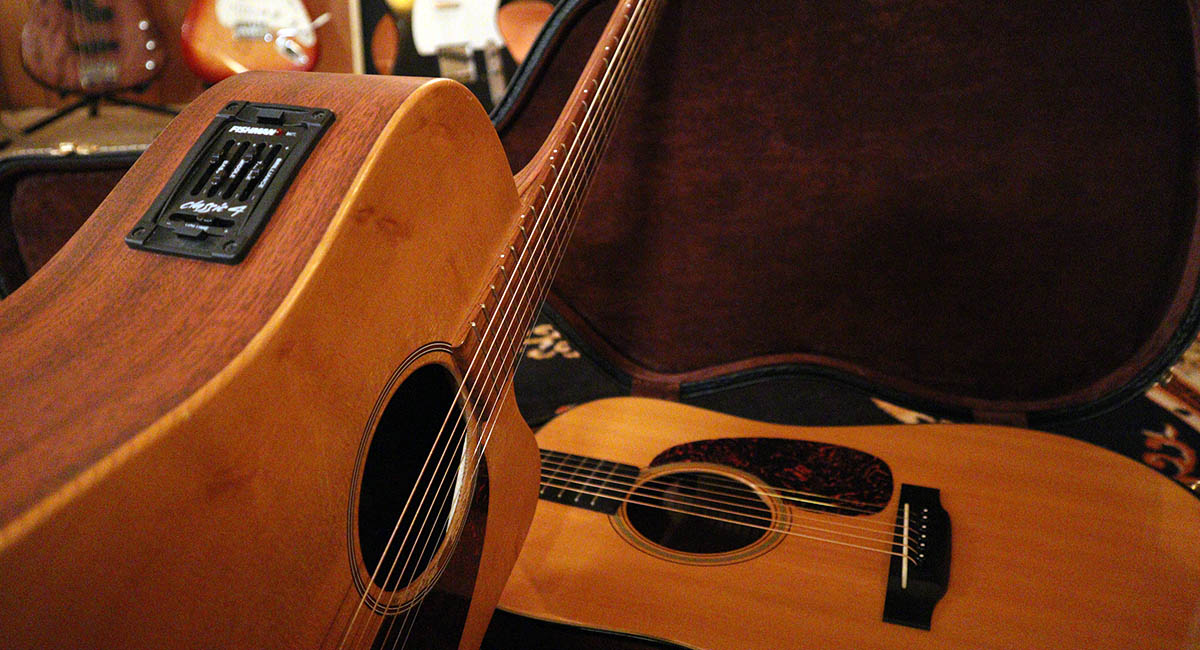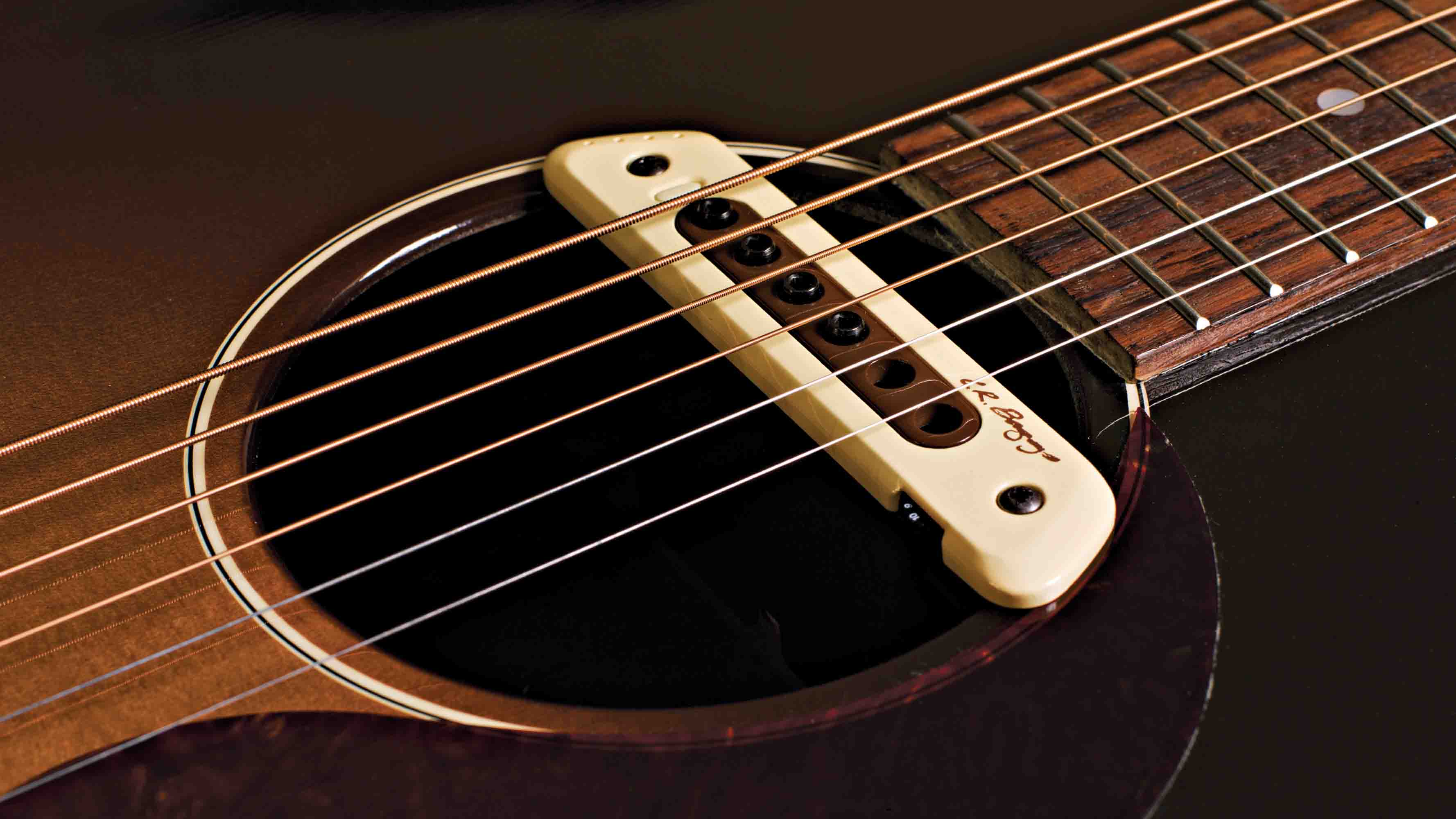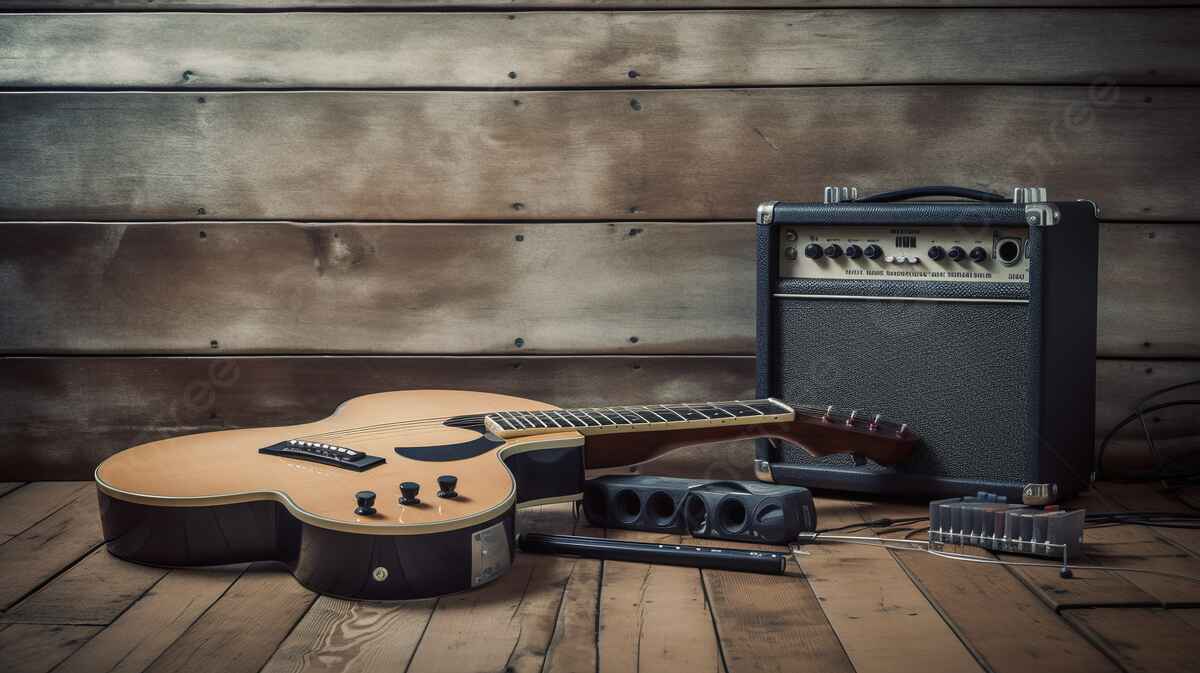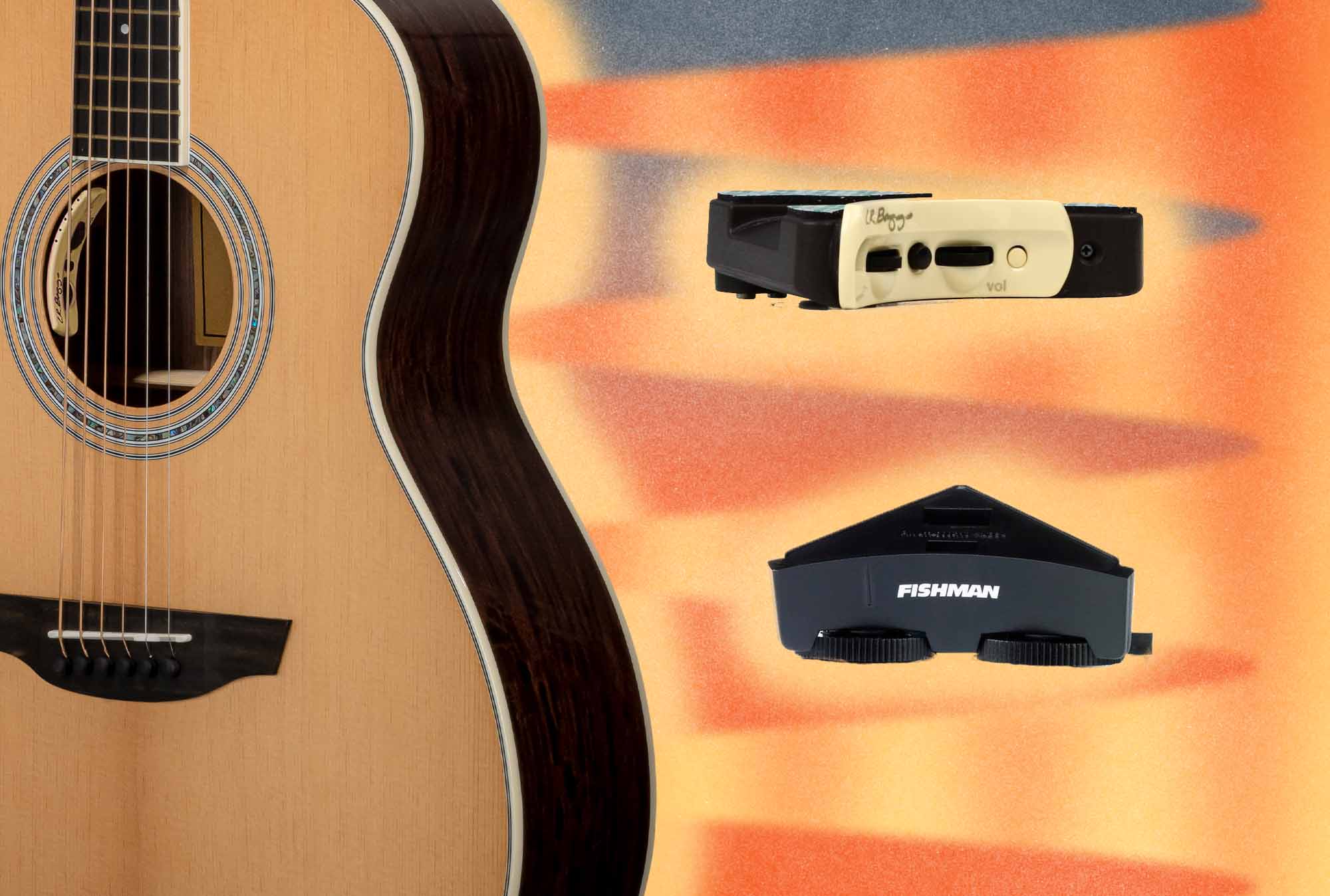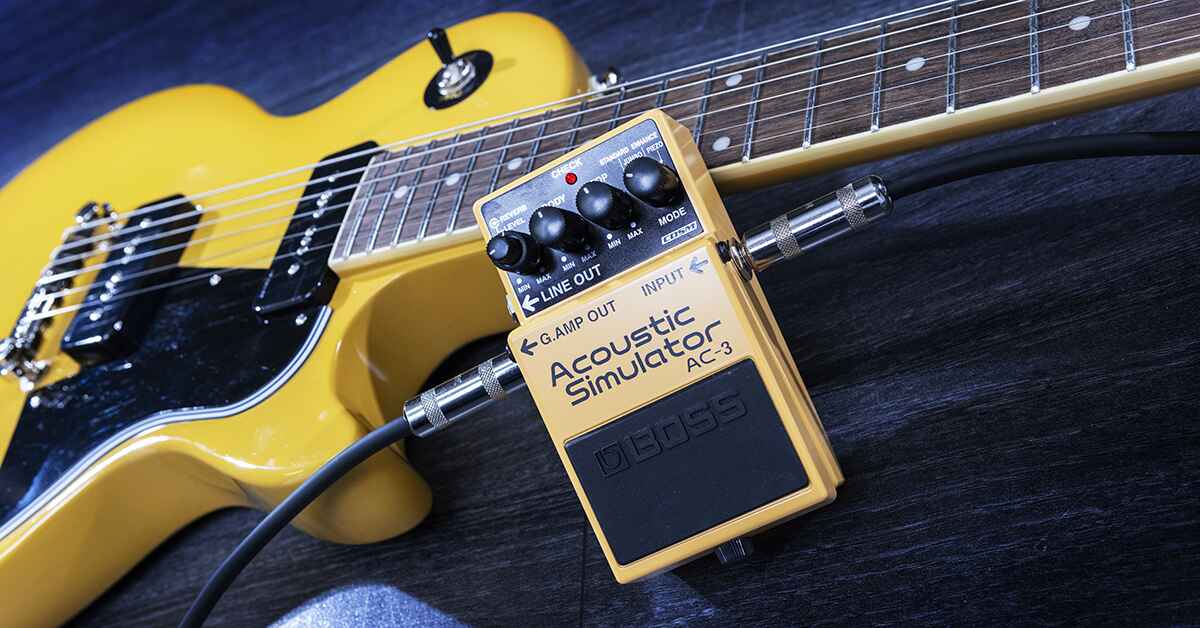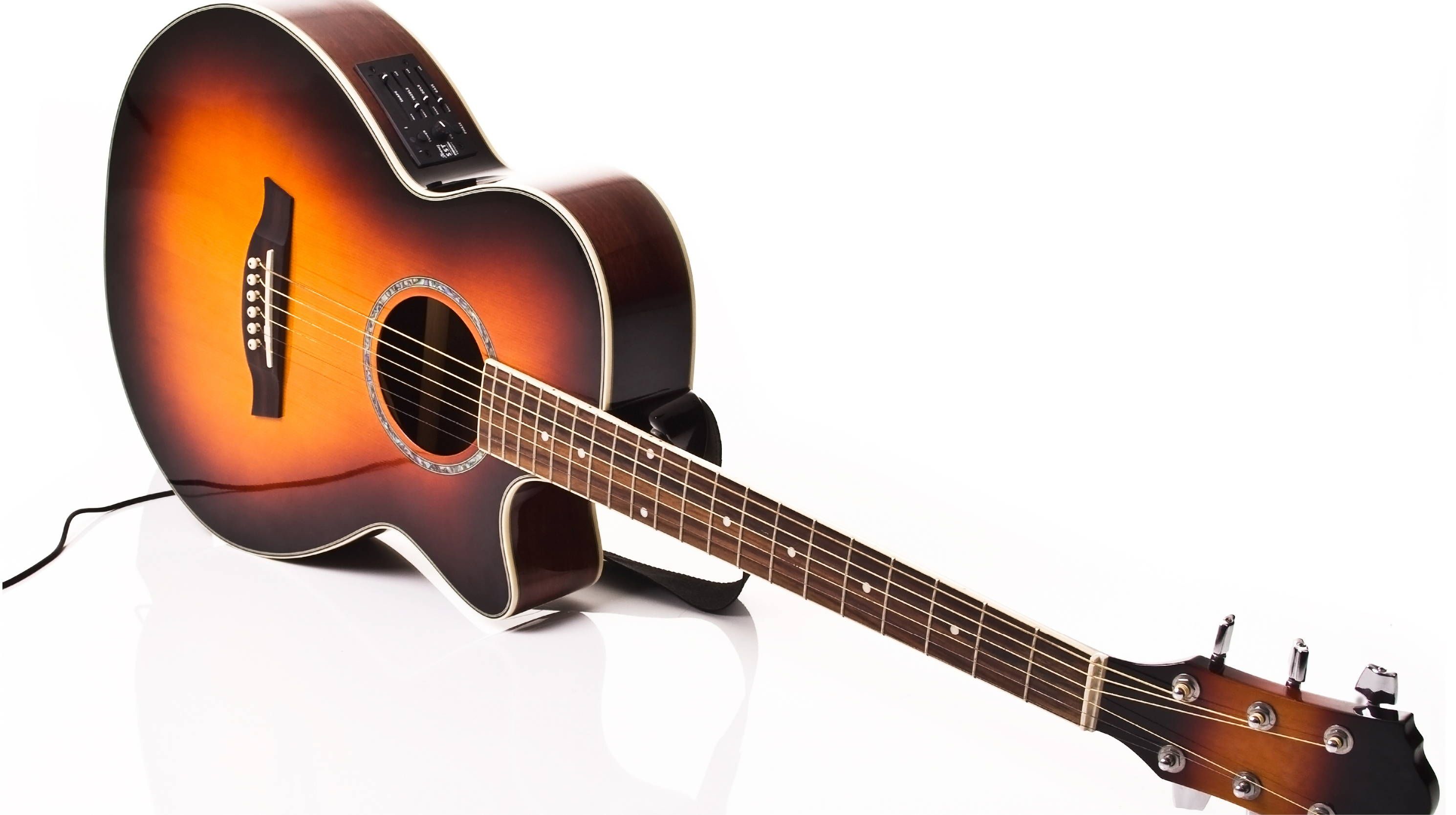Introduction
Acoustic guitars are prized for their rich, warm sound and natural resonance. They are a popular choice among musicians for both studio recordings and live performances. However, when it comes to amplifying the sound of an acoustic guitar, a simple microphone might not always suffice. That’s where an acoustic guitar pickup comes in.
A pickup is a device that captures the sound vibrations of an acoustic guitar and converts them into an electrical signal that can be amplified and modified. It is essentially a transducer that translates the mechanical energy of the strings into electrical energy, allowing the guitar’s sound to be projected through an amplifier or PA system.
With the help of an acoustic guitar pickup, musicians can enjoy greater control over their sound, whether they are playing in a small venue or a large auditorium. This versatile accessory has become a staple for many guitarists, offering them the ability to be heard and have their unique tone preserved even in high-volume settings.
In this article, we will explore the workings of acoustic guitar pickups, the various types available, and how to choose the right pickup for your instrument and musical style.
What is a pickup?
A pickup is a device used in musical instruments, including acoustic guitars, to capture the sound produced by the instrument and convert it into an electrical signal that can be amplified. It consists of one or more magnets, coils of wire, and a housing, often made of plastic or metal, that holds everything in place.
The primary function of a pickup is to detect the vibrations of the guitar strings and convert them into an electrical signal. When you strum or pluck the strings of an acoustic guitar, they vibrate, creating sound waves that propagate through the air. A pickup, positioned either inside or near the guitar’s body, picks up these vibrations and converts them into electrical impulses.
The magnetic coils within the pickup generate a magnetic field that interacts with the metal strings. As the strings vibrate, the magnetic field fluctuates, inducing an electrical current in the coils. This current represents the sound of the guitar and is then sent to an amplifier, where it can be boosted and manipulated to achieve different tones and effects.
It is important to note that pickups are not exclusive to acoustic guitars. They are commonly used in electric guitars, bass guitars, and other stringed instruments as well. However, in the context of acoustic guitars, pickups serve the purpose of allowing the natural sound of the instrument to be projected at a higher volume, making them useful for stage performances and recording purposes.
By using a pickup, acoustic guitarists can overcome the limitations of relying solely on the instrument’s natural sound projection. They can connect their guitar to an amplifier or PA system, allowing their playing to be heard clearly in larger venues or alongside other amplified instruments.
Now that we have a general understanding of what a pickup is and how it functions, let’s delve deeper into the different types of acoustic guitar pickups and their specific characteristics.
How does an acoustic guitar pickup work?
An acoustic guitar pickup works by converting the mechanical energy of the vibrating guitar strings into electrical signals. This process involves the use of different technologies and pickup designs, each with its own way of capturing the sound.
One common type of pickup found in acoustic guitars is the contact pickup. Contact pickups are small transducers that are attached directly to the surface of the guitar’s soundboard. When the strings vibrate, they transmit vibrations directly to the pickup, which then converts them into electrical signals. Contact pickups are known for their accurate sound reproduction and minimal interference from external noise.
Another type of acoustic guitar pickup is the soundboard transducer. This type of pickup is usually attached to the underside of the guitar’s soundboard, near the bridge. Soundboard transducers pick up the vibrations of the soundboard itself, rather than the strings. They offer a more natural and resonant sound, capturing the nuances of the guitar’s body and tonal characteristics.
Under-saddle pickups are also commonly used in acoustic guitars. These pickups are installed underneath the saddle, which is the part of the guitar where the strings rest before they pass over the bridge. Under-saddle pickups detect the vibrations of the strings as they pass over the saddle, providing a clean and balanced signal. They are often favored for their ability to accurately reproduce the natural tone of the guitar.
Alternatively, some acoustic guitars use soundhole pickups. These pickups are placed inside the soundhole of the guitar and capture the vibrations of the strings through the soundhole opening. Soundhole pickups are a popular choice for their ease of installation and use. They offer a warm and rich tone, ideal for genres such as folk and blues.
Magnetic pickups, commonly found in electric guitars, can also be used with acoustic guitars. These pickups use magnets and coil wire to detect the magnetic fluctuations caused by the vibrating strings. While they may not capture the natural acoustic sound as accurately as other types of pickups, magnetic pickups can provide a unique tone with added sustain and drive.
Overall, acoustic guitar pickups provide a means to amplify and shape the sound of the instrument. By converting the vibrations of the guitar strings into electrical signals, these pickups allow for greater versatility, enabling guitarists to be heard in various performance settings and to experiment with different sounds and effects.
Now that we have discussed how acoustic guitar pickups work, let’s explore the different types of acoustic guitar pickups in more detail.
Types of acoustic guitar pickups
Acoustic guitar pickups come in various types, each with its own unique design and sonic characteristics. Understanding the different types of pickups can help you choose the right one for your playing style and desired sound. Let’s explore some of the most common types of acoustic guitar pickups:
1. Contact pickups: Contact pickups are small transducers that are attached directly to the surface of the guitar’s soundboard. These pickups convert the vibrations of the strings into electrical signals by picking up the direct contact with the soundboard. They offer a natural and balanced sound, with minimal interference from external noise.
2. Soundboard transducer pickups: Unlike contact pickups, soundboard transducer pickups are attached to the underside of the guitar’s soundboard, near the bridge. They capture the vibrations of the entire soundboard, resulting in a more resonant and nuanced sound. Soundboard transducers are known for their ability to reproduce the natural tonal characteristics of the guitar.
3. Under-saddle pickups: Under-saddle pickups are installed underneath the saddle of the guitar, which is the part of the bridge where the strings rest. These pickups detect the vibrations of the strings as they pass over the saddle, providing a clean and balanced signal. Under-saddle pickups are widely used in acoustic guitars for their accuracy and ability to faithfully reproduce the natural sound of the instrument.
4. Soundhole pickups: As the name suggests, soundhole pickups are placed inside the soundhole of the guitar. They capture the vibrations of the strings through the soundhole opening. Soundhole pickups are known for their warm and rich tone, making them a popular choice among folk and blues guitarists. They are also easy to install and remove.
5. Magnetic pickups: While primarily used in electric guitars, magnetic pickups can also be used with acoustic guitars. These pickups use magnets and coil wire to detect the magnetic fluctuations caused by the vibrating strings. Magnetic pickups offer a unique tone with added sustain and drive, although they may not capture the natural acoustic sound as accurately as other types of pickups.
It is important to note that each type of pickup has its own advantages and drawbacks. Factors such as playing style, musical genre, and personal preference should be considered when choosing the right pickup for your acoustic guitar.
Now that we have explored the different types of pickups, let’s discuss some factors to consider when choosing the right pickup for your acoustic guitar.
Contact pickups
Contact pickups, also known as piezo pickups, are a popular choice for acoustic guitarists seeking a simple and effective way to amplify their instrument. These pickups are small transducers that are attached directly to the surface of the guitar’s soundboard.
One of the key advantages of contact pickups is their ability to accurately capture the vibrations of the strings, resulting in a natural and balanced sound. By having direct contact with the soundboard, contact pickups eliminate interference from external noise and capture the resonance and tonal nuances of the guitar.
Contact pickups work by using piezoelectric elements, which generate an electrical signal in response to mechanical pressure. When the guitar strings vibrate, they transmit vibrations directly to the pickup, causing the piezoelectric elements to generate an electrical signal.
These pickups are known for their excellent feedback resistance, making them suitable for live performances where high volume levels are involved. They are also easy to install and remove, allowing you to switch between amplified and unamplified playing quickly.
While contact pickups offer many advantages, they do have some limitations. They tend to have a brighter and more focused tone compared to other types of pickups, and they may not fully capture the natural resonances of the guitar’s body. Additionally, some contact pickups are sensitive to position and require careful placement to achieve the desired sound.
When using a contact pickup, it is important to pair it with a quality preamp or equalizer to shape and enhance the sound. This allows you to adjust the tone and eliminate any unwanted frequencies that may arise from your specific guitar or playing style.
Overall, contact pickups provide guitarists a practical and reliable solution for amplifying their acoustic guitars. Their accuracy, feedback resistance, and ease of installation make them a popular choice, particularly for live performances where reliability and convenience are essential.
Now that we have explored contact pickups, let’s move on to discussing another type of acoustic guitar pickup – soundboard transducer pickups.
Soundboard transducer pickups
Soundboard transducer pickups, also known as soundboard transducers or soundboard sensors, offer a unique way of capturing the acoustic sound of an acoustic guitar. These pickups are usually attached to the underside of the guitar’s soundboard, near the bridge.
Unlike other types of pickups, which primarily capture the vibrations of the guitar strings, soundboard transducer pickups take advantage of the guitar’s soundboard itself. When the strings vibrate, the soundboard resonates and vibrates as well. The soundboard transducer pickup picks up these vibrations, translating them into electrical signals that can be amplified.
The use of soundboard transducer pickups provides a more natural and resonant sound. By capturing the vibrations of the entire soundboard, the pickup captures the unique tonal characteristics and nuances of the guitar. This results in a more realistic and organic representation of the instrument’s sound.
Soundboard transducers are often thought of as producing a warmer, more complex tone compared to other types of pickups. They excel in reproducing the rich harmonics and tonal variations that occur when the soundboard resonates. This makes them a popular choice for fingerstyle players and acoustic guitarists who want to preserve the natural acoustic sound as faithfully as possible.
One of the advantages of soundboard transducer pickups is their ability to capture the percussive elements of acoustic guitar playing, such as tapping or body slapping. The vibrations created by these techniques are effectively transmitted through the soundboard and picked up by the transducer, resulting in a dynamic and expressive sound.
While soundboard transducer pickups offer excellent tonal reproduction, they can be more susceptible to feedback issues compared to other types of pickups. The placement and adjustment of the pickup are crucial in minimizing feedback and achieving the desired sound. Additionally, these pickups may require an external preamp or equalizer to fine-tune the signal and shape the tone.
Overall, soundboard transducer pickups provide acoustic guitarists with a means to capture the authentic sound of their instrument. Their ability to capture the vibrations of the soundboard and reproduce the natural tonal characteristics makes them a favorite among players who value a warm and organic sound.
Now, let’s explore another type of acoustic guitar pickup – under-saddle pickups.
Under-saddle pickups
Under-saddle pickups are a common type of pickup found in many acoustic guitars. As the name suggests, these pickups are installed underneath the saddle, which is the part of the guitar bridge where the strings rest before they pass over the bridge pins.
Under-saddle pickups work by detecting the vibrations of the guitar strings as they pass over the saddle. This is achieved through the use of piezo-electric crystals, which generate electrical signals when subjected to mechanical pressure. When the strings vibrate, they create pressure on the crystals, causing them to generate an electrical current that represents the sound of the guitar.
One of the main advantages of under-saddle pickups is their ability to provide a clean and balanced signal. They are known for their accurate reproduction of the natural tone of the guitar, capturing the nuances of each string and preserving the dynamics of the instrument. Under-saddle pickups are widely used in professional settings and studio recordings for their reliable and transparent sound.
Another benefit of under-saddle pickups is their low profile design, which allows for easy installation and a minimal impact on the appearance and playability of the guitar. Their discreet placement under the saddle ensures that the guitar’s aesthetics and acoustic performance remain largely unchanged.
While under-saddle pickups offer many advantages, they do have some limitations. Due to their location, under-saddle pickups primarily capture the vibrations of the strings and don’t fully capture the resonances of the guitar’s soundboard or body. Some players may find that under-saddle pickups produce a more “electric” or “processed” sound compared to other types of pickups.
To overcome some of these limitations, many under-saddle pickups are combined with internal microphones or additional pickups to capture a more balanced and full-bodied sound. This hybrid pickup system provides a blend of the direct string signal from the under-saddle pickup and the ambient sound captured by the internal microphone or secondary pickup.
Overall, under-saddle pickups are a popular choice for acoustic guitarists looking for a reliable and versatile pickup option. Their accurate tone reproduction, ease of installation, and unobtrusive design make them suitable for a wide range of musical styles and performance settings.
Now that we have explored under-saddle pickups, let’s move on to discussing another type of acoustic guitar pickup – soundhole pickups.
Soundhole pickups
Soundhole pickups, as the name suggests, are pickups that are placed inside the soundhole of an acoustic guitar. They are a popular choice among acoustic guitarists for their ease of installation and versatility.
Soundhole pickups typically consist of one or more magnetic coils that detect the vibrations of the guitar strings. These pickups are usually positioned just below the strings, capturing the sound as the strings vibrate above them. The magnetic coils convert these vibrations into electrical signals that can be amplified and shaped.
One of the advantages of soundhole pickups is their simplicity and convenience. They are easy to install and remove, and they do not require any permanent modifications to the guitar. This makes them a preferred choice for guitarists who want the flexibility to switch between amplified and unamplified playing.
Soundhole pickups are known for their warm and rich tone. They produce a balanced sound with a strong midrange and smooth highs. The placement of the pickup inside the soundhole provides a close proximity to the vibrating strings, allowing for a direct and focused capture of the guitar’s sound.
Another advantage of soundhole pickups is their ability to reduce feedback. By being positioned inside the soundhole, they are shielded from external sound sources and environmental noise, minimizing the chances of feedback occurring during performances.
However, it’s worth noting that soundhole pickups may not capture the subtle nuances and details of the guitar’s acoustic sound as accurately as other types of pickups. The magnetic coils pick up primarily the vibrations of the strings, which may result in a slightly more electric or processed sound compared to other pickup types.
Some soundhole pickups offer additional features, such as onboard volume and tone controls, that allow for further tonal shaping and adjustments. These controls can be conveniently accessed from the soundhole itself, providing easy control over the amplified sound.
Overall, soundhole pickups are a popular choice for guitarists seeking a straightforward and reliable way to amplify their acoustic guitars. Their easy installation, warm tone, and feedback resistance make them a versatile option for both live performances and studio recordings.
Now, let’s take a look at another type of acoustic guitar pickup – magnetic pickups.
Magnetic pickups
Magnetic pickups are traditionally associated with electric guitars, but they can also be used with acoustic guitars to achieve a different and distinctive sound. These pickups consist of magnets and a coil of wire that detects the changes in the magnetic field caused by the vibrating guitar strings.
When the strings of an acoustic guitar vibrate, they disrupt the magnetic field created by the magnets within the pickup. This disturbance generates an electrical current in the coil of wire, which is then sent to an amplifier or other electronic devices to produce sound.
Magnetic pickups offer a unique tone that differs from other types of acoustic guitar pickups. They have a characteristic “electric” sound with added sustain and a smooth, compressed response. This can be desirable for players looking to achieve a more punchy, driven sound on their acoustic guitar.
One advantage of magnetic pickups is their ability to capture the string vibrations consistently, regardless of the guitar’s body or soundboard. This makes them particularly useful for players who want to achieve a consistent and predictable sound, regardless of the specific acoustic properties of their instrument.
It’s important to note that using a magnetic pickup with an acoustic guitar may alter its acoustic qualities. The pickup’s magnetic field can dampen the acoustic resonance and natural vibrations of the guitar’s body, resulting in a somewhat different sound compared to using other types of pickups.
Another consideration with magnetic pickups is the potential for feedback, especially at higher volume levels. The magnetic field created by the pickups can interact with other magnetic or electronic devices, causing unwanted noise and feedback. Proper placement of the pickup and using feedback suppression techniques can help mitigate this issue.
Many acoustic guitars equipped with magnetic pickups feature additional control knobs and switches that allow players to shape the sound further. These controls can include volume and tone adjustments, as well as selector switches to choose different pickup configurations.
While magnetic pickups may not preserve the natural acoustic sound of the guitar as faithfully as other pickup types, they offer a unique and distinctive tone for players looking to experiment with different sonic possibilities. They are commonly used in genres such as blues, rock, and country, where a more aggressive and amplified sound is desired.
Now that we have explored magnetic pickups, let’s move on to discussing the important factors to consider when choosing the right pickup for your acoustic guitar.
Choosing the right pickup for your acoustic guitar
When it comes to choosing the right pickup for your acoustic guitar, there are several factors you should consider. Your pickup selection can greatly impact the tone, versatility, and overall sound of your instrument. Here are some factors to keep in mind:
1. Sound preference: Consider the sound you want to achieve. Do you prefer a more natural, acoustic sound, or are you looking for a specific tone, such as a brighter or warmer sound? Different types of pickups offer varying tonal characteristics, so it’s important to choose one that aligns with your preferred sound.
2. Playing style and genre: Your playing style and the genre of music you primarily play can influence your pickup choice. For example, if you’re a fingerstyle player, a soundboard transducer or under-saddle pickup may best capture the nuances and dynamics of your playing. If you play in a band setting and need a more robust and projected sound, a contact pickup or magnetic pickup might be suitable.
3. Feedback resistance: If you plan on playing at high volumes or in amplified settings, feedback resistance becomes crucial. Some pickups are more prone to feedback than others, so consider the pickup’s design and feedback-reducing features, such as shielding or frequency response adjustments.
4. Installation and convenience: Think about your comfort level with installation and any potential modifications to your guitar. Soundhole pickups are typically easy to install and remove without any permanent changes to the instrument, while other pickups may require more extensive installation procedures.
5. Budget: Like any gear purchase, your budget is an important consideration. Pickups come in a wide range of price points, and while higher-end pickups often offer superior sound quality and features, there are also affordable options available that can still deliver great results.
6. Blend systems: Some acoustic guitars come equipped with blend systems, which combine multiple pickups or utilize internal microphones in conjunction with pickups. These systems offer greater flexibility in shaping your sound and capturing the nuances of your playing. Consider whether a blend system is a desirable feature for your acoustic guitar.
Ultimately, the right pickup for your acoustic guitar is a personal choice that depends on your unique needs, playing style, and sonic preferences. It can be helpful to try out different pickups, either on your own guitar or by listening to demos, to get a sense of how they affect the sound and feel of your instrument.
By considering these factors and exploring the different pickup options available, you can find the perfect pickup that enhances your acoustic guitar’s sound and allows you to express your musical style to the fullest.
Conclusion
Acoustic guitar pickups play a vital role in amplifying and shaping the sound of your instrument. Whether you’re performing on stage, recording in the studio, or simply looking to experiment with different tones, choosing the right pickup can make a significant difference in your overall sound and playing experience.
We have explored various types of acoustic guitar pickups, including contact pickups, soundboard transducer pickups, under-saddle pickups, soundhole pickups, and magnetic pickups. Each type has its own unique characteristics and advantages, offering different tonal qualities and suitability for specific playing styles and genres.
To choose the right pickup for your acoustic guitar, consider factors such as your desired sound, playing style, feedback resistance, installation convenience, budget, and the availability of blend systems. By taking these factors into account, you can find a pickup that best complements your acoustic guitar and meets your musical needs.
It’s worth noting that experimenting with different pickups can be a valuable learning experience and can help you further refine your guitar’s sound. Don’t be afraid to try out different pickups and configurations to discover the tones that inspire and resonate with you.
Remember, the pickup you choose is just one part of the equation. Pairing it with a high-quality amplifier or PA system, as well as using appropriate EQ and effects, can further enhance your acoustic guitar’s amplified sound.
Ultimately, the key is to find a pickup that captures and preserves the unique character and tonal qualities of your acoustic guitar, while also giving you the versatility and control to shape your sound according to your artistic vision.
With the right pickup, you can unleash the full potential of your acoustic guitar and bring your music to life in a way that resonates with both you and your audience.







